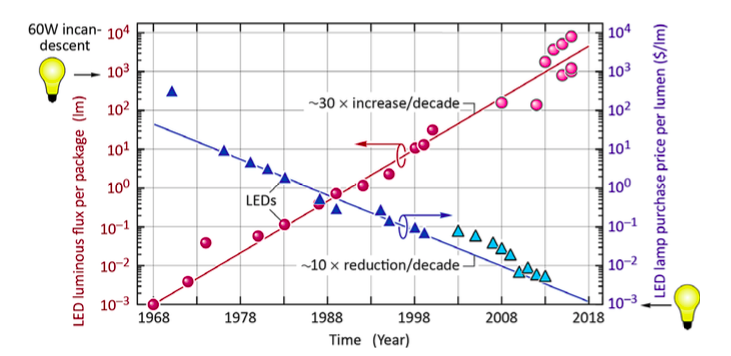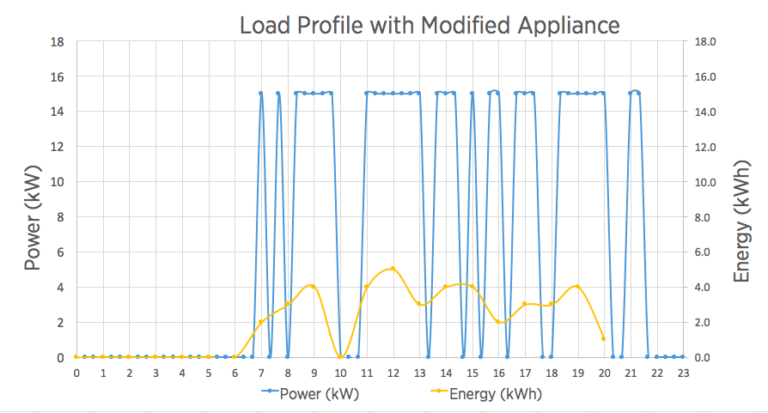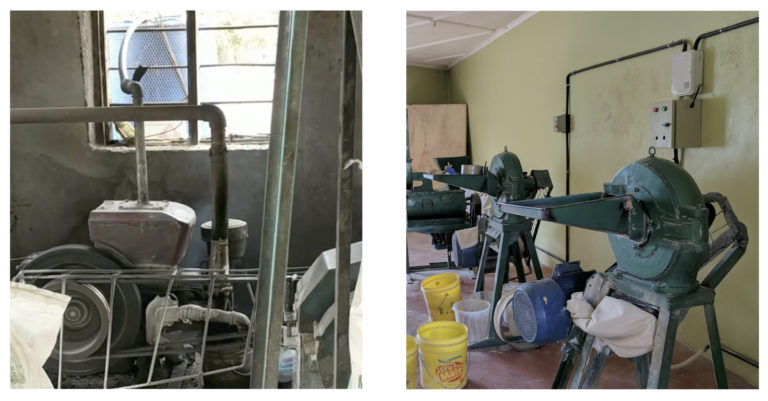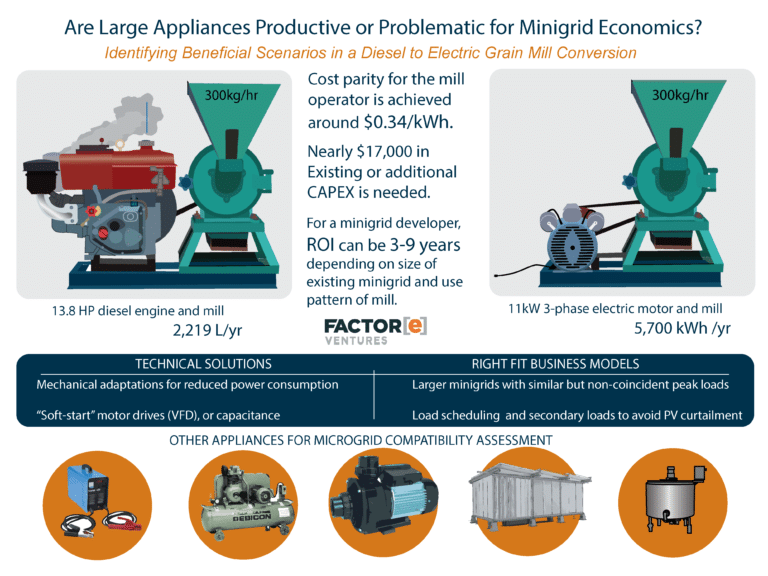The Problem with Productive Use Appliances
*For an update on what we’re doing in this area, please see this post.*
“The minigrid business is challenging; no one has really quite figured it out yet. To boost average revenue per connection, we’re doing some thinking about productive use appliances.” Lean in to any conversation in the energy access sector, and you’ve probably heard this sentence. What appliances are these? And how, exactly, does one appliance get the famed title of “productive”?
Let’s step back for just one moment and remember that electricity by itself isn’t very helpful. Of course, we need appliances to make electricity meaningful. In emerging markets, we commonly see appliances for lighting, cell phone charging, and entertainment (TVs, radios). What do these appliances all have in common? They are low-cost and efficient thanks to advances in solid-state technology.
Source: “White light-emitting diodes: History, progress, and future”. Cho et al., 2017
For example, for every decade since 1970, LED costs fall by a factor of 10, lumens increase by 30x, and efficiency marches to the theoretical limit.[1] Emerging markets have benefited from LED R&D, which marches onward with or without impact sector investment.
These low-cost, high-efficiency, appliances have realized value quickly in emerging markets. The energy sources needed to power them are small (in watts and in cost). Today, there are about 100 companies selling stand-alone solar lanterns and solar home systems [2], which exhibit signs of a maturing market: robust supply and distribution channels, financing (if needed at all), and after-sales service. These devices are used to complete tasks at night, light up vendor stalls in markets, and to communicate ideas. So can we consider them “productive”? A light that allows a child to read at night is no doubt “productive”, but generates no income. However, a light that brings more customers to a vendor stall may result in additional income.
To clear up the productive use-case, why not term the appliances in question “income-generating appliances” or IGAs? Moving forward with this concept in mind, which appliances are income generating? Which ones are suitable for use in remote communities? Which ones could offer lower operating costs if powered by a renewable energy system?
Unsurprisingly, not all IGAs are compatible with the typical off-grid PV/battery systems found in remote locations. On the economic side, the cheapest IGAs are ones developed for AC-grid connection. They are cheap primarily because they’re produced in large quantities. For appliances with motors, most have induction motors made of copper wire and laminated steel. In contrast, higher efficiency motors (AC Permanent Magnet or Brushless DC) commonly used in off-grid appliances include ferrite or rare-earth materials, which are relatively expensive.
Load profile of high-power appliance that is used intermittently during the day.
On the technical side, income-generating appliances can be challenging to power from high-renewable penetration systems. Sometimes it’s because the use pattern of the appliance is seasonal; sometimes it’s because the appliance requires high power for short periods of time. Sometimes, it’s both. A high-power, short duration appliance needs a larger generation system to power it, but will use a disproportionately small amount of energy over time. In this case, a large generation system sits idle for long periods of time, which extends the ROI unfavorably.
IGAs are often considered for minigrids, because we jump to the conclusion that the minigrid operator could sell more electricity (and thus become a profitable business). However, if you actually run the numbers, it doesn’t always pencil out. At least, not with off-the-shelf AC appliances.
For example, some communities in East Africa will mill maize for 4-6 months after harvest. Let’s assume we do absolutely nothing clever in transitioning this mill from a diesel engine to an electric power supply. We require the same throughput of maize milled (kilograms/hour), and assume this is easily achieved with an 11kW, 3-phase electric motor, which is comparable to the existing, 13.8HP diesel engine.
Posho Mills in East Africa. Left: Off-grid, 13.8 HP diesel mill. Right: Grid-connected, 11kW, 3-phase electric mills
Add a seasonal, intermittent usage pattern, and you’ve got an appliance that needs a significant amount of PV and battery to operate, but is underutilized. Many of today’s small minigrids designed for household electricity consumption may need to add generation capabilities to serve the load. Depending on the existing size of the minigrid, the ROI for the additional CAPEX of PV and battery could be 3-9 years if the electricity tariff is set to be competitive with diesel fuel. In this scenario, a minigrid operator is better off adding a diesel generator to the grid. Although it’s likely a cleaner solution, it’s not too far from the baseline scenario.
Outputs of a techno-economic assessment of adding an electric grain mill to a minigrid.
This analysis points to a need for innovation in either the appliance or power generation. How could the mill be modified to produce a consumer-approved throughput but at a lower power? Is there a way to utilize this mill more than half the year? Could the mill be given an operating schedule, or would customers reject that?
The takeaways for off-grid appliances are that:
- Not all “productive use” appliances generate income.
- Not all income generating appliances (IGAs) are economically viable without innovation in the control and design of a PV/battery power system. Appliances need to be evaluated on a case-by-case basis using local use patterns.
- Not all IGAs are economically viable without innovation in the appliance itself. A majority of off-the-shelf IGAs are for use with utility-scale grid connection. Accelerated development in off-grid appliances is needed to produce fit-for-market appliances at larger volumes with robust distribution channels.
Factor[e] is working to answer these problem statements through techno-economic analyses, internal product testing, and conversations with partners in-market. We are also in a unique position to rapidly bring solutions to market. Just a few examples from our portfolio: SparkMeters can measure energy consumption of appliances in a field installation, Odyssey Energy Solutions can bring together appliance manufacturers/distributors on the vendor marketplace, and we can model any load scenario with HOMER Energy. Our offices in East Africa and India give us real-time visibility into emerging markets and the companies working in them. This effort will not only inform our future investments, but also the wider energy access sector.
[1] “White light-emitting diodes: History, progress, and future.” Cho et al., 2017
[2] Off-grid Solar Market Trends Report 2016. Bloomberg New Energy Finance, Feb. 2016.

 Catalytic Investing in Emerging Markets
Catalytic Investing in Emerging Markets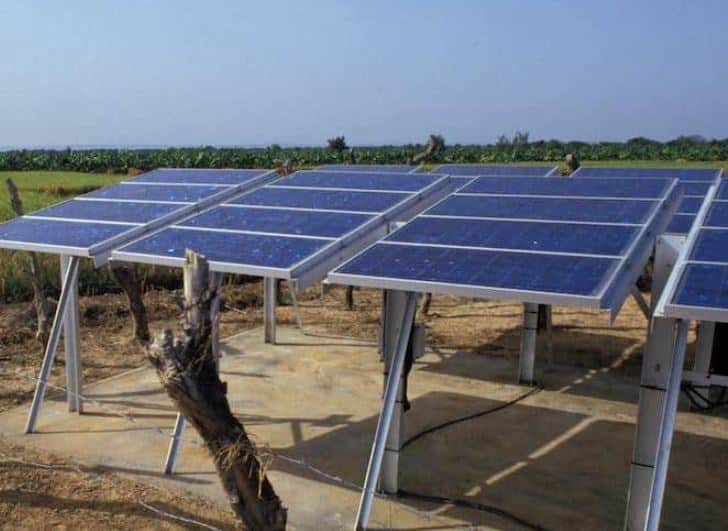 The Nexus of Agriculture and Energy in Africa: Five Lessons for Bridging the Ag-Energy Gap
The Nexus of Agriculture and Energy in Africa: Five Lessons for Bridging the Ag-Energy Gap Looking Beyond Appliances: Systemic Barriers to Minigrid Demand Stimulation
Looking Beyond Appliances: Systemic Barriers to Minigrid Demand Stimulation The Clock is Ticking on Energy Access: Exploring Factor[e] Ventures’ Big Bet on Mini-Grids
The Clock is Ticking on Energy Access: Exploring Factor[e] Ventures’ Big Bet on Mini-Grids